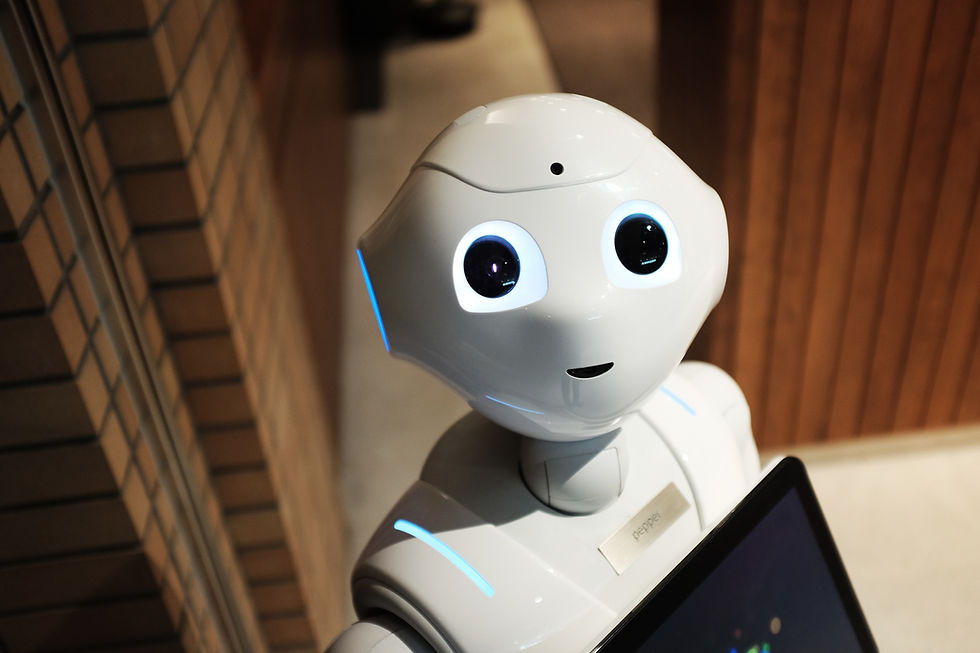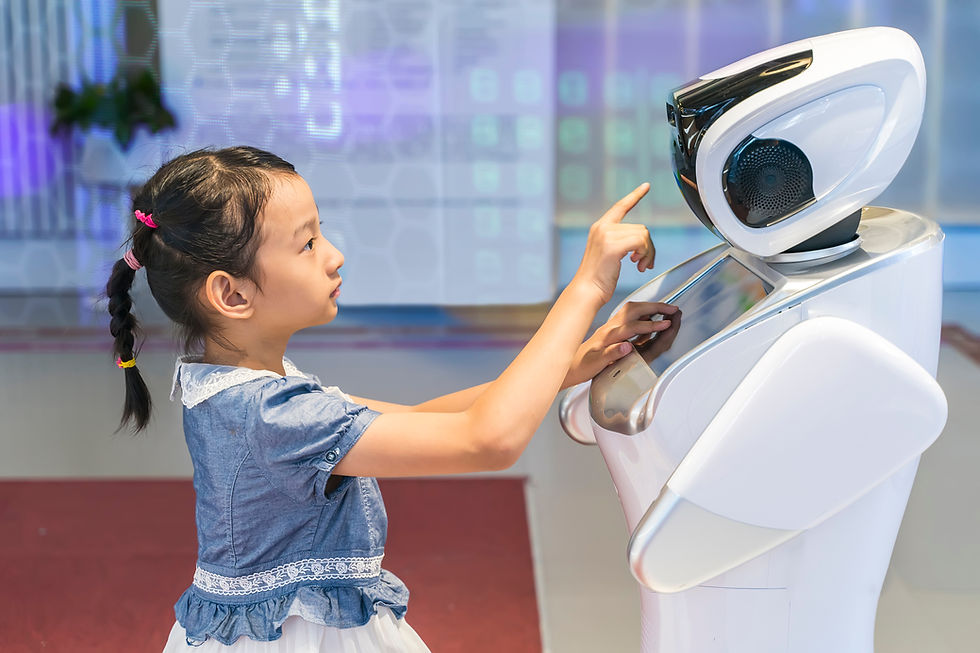Exploring Smart Cities: My time in Singapore
- Nagehan Işık
- 11 Haz 2023
- 6 dakikada okunur
Güncelleme tarihi: 19 Ağu
When it comes to the world’s smartest cities, Singapore has always been at the top of the list. According to the International Institute for Management Development (IMD), a highly respected academic institution, Singapore consistently ranks among the world’s pioneering global benchmarks for smart living, technology, and sustainability.
Disclaimer: Everything I mention here comes from my own experience during the trip. The brands and services included are simply what I used, and none of them are ads or sponsored content.
I recently traveled to Singapore and it wasn’t just visiting a new country — I was stepping into the future, where technology and design are seamlessly integrated to make life smoother, more efficient, and more enjoyable. I tried the seamless transport system, used the city’s smart services, and experienced firsthand why Singapore has such a strong reputation in the smart living space.

From the moment you land at Changi Airport, you experience the city’s commitment to innovation, connectivity, and world-class service. After my trip, I looked deeper and found that Singapore had set these goals years ago — with events like TEDx conferences serving as evidence of this vision. At that time, with a mobile phone penetration rate of 85%, Singapore was already a place where technology use was widespread. This made it easier to convince society to adopt technology-driven solutions. According to Dr. Cheong at a Tedx conference, the city’s infrastructure is also designed like a human body, where buildings, green spaces, roads, and waterways distributed in harmony. With a sensor layer that continuously collects data, insights enable the city to keep learning and adapting. And from this, Singapore can develop smart applications for day-to-day living.
The examples of data leveraging that Dr. Cheong shares are incredible — especially the shadow simulation of buildings used to position parks in the right spots, creating spaces where children can spend the whole day. I definitely recommend you to watch the talk; it’s worth checking out.
Singapore’s government drives smart city enhancements by funding projects like the Smart Nation Initiative, the electronic road pricing system (ERP) to manage traffic, the Housing & Development Board’s smart sensors in public housing, and national investments in 5G and AI-enabled urban planning. Such smart city projects may not always be visible to visitors, but there are also other government- and private-sector-driven solutions—like seamless e-payments, tap-and-go transport, and airport-city connectivity—that can be directly experienced in daily life, and what’s striking is how common and accessible they are. I’d like to walk you through how I came across these solutions firsthand, each leaving a distinct impression on me.
Self Check-Outs Everywhere
In Singapore, self-check-out systems have extended beyond supermarkets—appearing increasingly in retail clothing stores—and their presence is beginning to expand into other retail formats. As a visitor, I was fascinated by how natural and widespread the experience felt—grabbing what I needed, scanning it myself, and paying with just a tap of my card or phone. Queues moved quickly, and staff were available nearby, not to handle transactions, but to assist when needed. This shift in roles highlighted how the city uses technology to streamline everyday tasks while still keeping the human element accessible. In fact, the technology worked so well and efficiently that I never saw anyone needing human assistance during my visit, including myself, even as a first-time visitor to the country.

From my perspective, self check-out systems reflect a mindset of efficiency and trust in people. I liked the freedom of moving at my own pace without waiting in line. At the same time, I wondered how this shift might change social interactions and the workforce in the long run—fewer casual conversations with cashiers, but perhaps more focus on speed and independence, with fewer staff needed overall.
Self Check-In at Hotels
I stayed at YOTEL Singapore Orchard Road and experienced self check-in for the first time in a hotel setting. The process felt more like using an airport kiosk than approaching a traditional reception desk: I entered my details, scanned my passport, confirmed the details from my Booking.com reservation, made the payment, signed on-screen and the machine instantly gave me my room key. It was quick and efficient, offered several language options, and saved me from waiting in line—something I really appreciated after a long day of travel. While staff were still available nearby for assistance, the whole system emphasized independence and speed, very much in line with Singapore’s smart city character.
The hotel also had a cute robot staff member, and it felt completely normal to share the elevator with her. Her job was to deliver orders to the hotel rooms, gliding through the hallways with ease—futuristic at first, but surprisingly ordinary after a while.

What I found interesting about hotel self check-in was the sense of autonomy it gave me. I didn’t have to wait for someone at the desk after a long flight—I could just go straight to my room. At the same time, I realized it also meant fewer interactions with hotel staff, which can sometimes be part of the charm of staying at a hotel. For me, the system worked as a great balance: the efficiency of technology was front and center, yet the human touch was still there in the background if you needed it.
Tap-and-Go on Public Transport
Getting around Singapore was as simple as tapping in and tapping out. I used my credit card at MRT gates and on buses—one tap to enter, one to exit—and the fare was calculated automatically—no separate transit card or top-ups needed. Transfers felt seamless: the queues moved quickly, gates responded instantly, and I never had to stop at a ticket machine or queue at a counter. For a frequent traveler, removing that tiny bit of friction makes a big difference; it’s pure “arrive, tap, go,” and you’re on your way.
Best of all, the fare was the same as using a local transit card —no tourist mark-up, no ‘convenience’ surcharge, and no need to buy or top up a separate pass. I didn’t have to track balances or hunt for kiosks. That price parity matters as a visitor: you get the local rate with less hassle, which is exactly how a smart city should feel.
Self Ordering with QR codes at restaurants
Although QR-code menus are common, in Singapore many restaurants let you order (and often pay) from the same digital menu, making the experience truly end-to-end and seamless. At many places, I ordered straight from the table by scanning a QR code—no app download required. The flow felt a lot like self check-in: scan, the digital menu opens, choose dishes, customize (spice level, add-ons, allergy notes), confirm the table number, and receive an order number. The kitchen got it instantly, and staff simply brought the food when it was ready. It was quick, efficient, available in multiple languages, and removed the need to flag someone down—freeing staff to focus on delivery and questions rather than taking orders. As a visitor, I loved the precision—no misheard orders, what I tapped was exactly what arrived.

Beyond Convenience in Tech: Sustainability at the Core
Technology is often linked with climate change—always-on screens, over-cooled buildings, and systems that consume more energy than they save. In Singapore, I noticed the opposite: tech is designed to cut waste. Digital-by-default services reduce paper and queues, public transport is prioritized over cars, and ‘smart’ systems—like targeted cooling and water reuse—aim to use fewer resources, not more.
The same smart-and-sustainable mindset shapes its landmarks. At Gardens by the Bay, I saw that it’s not just a beautiful attraction but also a symbol of this approach. The Supertrees are living vertical gardens that provide shade, and some have solar panels that help power the light show at night. Inside the conservatories, targeted cooling focuses on the areas where people and plants are—rather than the entire space—which cuts energy use. The park also reuses water through closed-loop, water-recycling systems to keep everything green. It’s a clear demonstration of how technology and ecology can coexist.

Lessons from Singapore for the Future
My trip to Singapore was more than sightseeing—it was an eye-opening look into how cities can evolve when vision, planning, and innovation come together. What struck me most was that technology wasn’t just added on top of the city; it was designed into the very core of daily life. Singapore shows us that a smart city isn’t about gadgets or buzzwords—it’s about creating a place where people can live better, safer, and more sustainably.
Also, what Singapore taught me is simple: design technology to remove tiny frictions, make it work with what people already carry (phones, contactless cards), and keep prices fair so adoption feels natural. Keep humans in the loop. Establish shared city standards that let transit, hotels, and restaurants plug into the same system—and require multilingual, accessible design. When the “good” choice is also the easiest—arrive, tap, go—people don’t need persuasion; they just use it.

